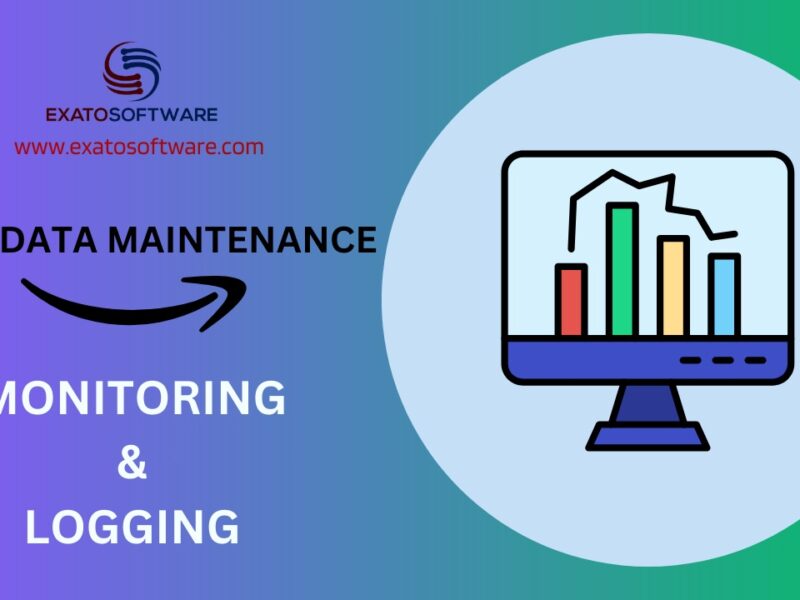Lambda is a serverless compute service offered by Amazon Web Services (AWS) that enables you to run code in response to events without having to manage servers. It is a component of AWS’ serverless computing platform and is made to make deploying and managing code for different use cases easier.
Crucial details about AWS Lambda
1. Execution that is driven by events: AWS Lambda functions are activated in response to specific events, such as updates to databases in Amazon DynamoDB or API Gateway or changes to data in an Amazon S3 bucket. Lambda automatically runs the associated function whenever an event takes place.
2. Lack of server administration: You don’t have to provision or manage servers when using AWS Lambda. The infrastructure, scaling, patching, and maintenance are handled by AWS. Only your code and the triggers need to be uploaded.
3. Pricing on a pay-as-you-go basis: Pay-as-you-go pricing is used by AWS Lambda. Your fees are determined by the volume of requests and the amount of computing time that your functions use. Because you only pay for the actual compute resources used during execution, this may be cost-effective.
4. Support for Different Languages: Python, Node.js, Java, C#, Ruby, and other programming languages are among those supported by AWS Lambda. Your Lambda functions can be written in whichever language you are most familiar with.
5. Scalability: Lambda functions scale automatically as more events come in. AWS Lambda will automatically provision the resources required to handle the load if you have a high volume of events.
6. Seamless Integration: Lambda’s seamless integration with other AWS services makes it simple to create serverless applications that make use of the entire AWS ecosystem.
For AWS Lambda, typical use cases
1. Processing of data: When new records are added to a DynamoDB table or an S3 bucket, you can use Lambda to process and transform the data as it comes in.
2. Processing of files in real-time: Lambda functions can be used for real-time data processing and analysis, including log analysis and image processing.
3. Web applications and APIs: Through the use of services like API Gateway, Lambda functions can handle HTTP requests to power the backend of web applications and APIs.
4. Internet of Things (IoT): IoT device data can be processed using Lambda, and sensor readings can be used to initiate actions.
5. Automating and coordinating: Across a number of AWS services, Lambda can orchestrate tasks and automate workflows.
6. A Fundamental part of AWS’s serverless architecture: AWS Lambda is a potent tool for creating scalable, event-driven applications without the hassle of managing servers.
AWS Lambda functions can be made to perform better, cost less, and meet the needs of your application by optimizing them.
Methods for improving Lambda functions
1. Right size Your Function: Select the proper memory size for your function. Lambda distributes CPU power proportionally to memory size, so allocating insufficient memory may cause performance to suffer.
– Track the actual memory usage for your function and make necessary adjustments.
2. Optimize Code: Improve the speed of execution of your code. Reduce the amount of time your function spends running by using effective libraries and algorithms.
– Minimize library dependencies to cut down on startup time and deployment package size.
– Share code across multiple functions using Lambda layers to minimize the size of the deployment package.
– Cache frequently used data to avoid performing the same calculations repeatedly.
3. Concurrent Execution: Modify the concurrency settings to correspond with the anticipated load. Inefficiencies and higher costs can result from over- or under-provisioning.
– To prevent cold starts, think about using provisioned concurrency for predictable workloads.
4. Cold Starts: Reduce cold starts by optimizing the initialization code and slicing down the deployment package size.
– If low-latency is essential for your application, use provisioned concurrency or maintain warm-up mechanisms.
5. Use Triggers Efficiently: Ensure that your triggers, such as API Gateway, S3, and SQS, are optimally configured to reduce the execution of unnecessary functions.
6. Use Amazon CloudWatch for logging and monitoring purposes: Create custom CloudWatch metrics to monitor the success and failure of a single function.
– To balance cost and visibility, reduce logging verbosity.
7. Implement appropriate error handling and retry mechanisms to make sure the function can recover from temporary failures without needless retries.
8. Resource Cleanup: To avoid resource leaks, release any resources (such as open database connections) when they are no longer required.
9. Security Best Practices: Adhere to security best practices to guarantee the security of your Lambda functions.
10. Cost Optimization: Put cost controls in place by configuring billing alerts and using AWS Cost Explorer to keep track of Lambda-related expenses.
11. Use Stateful Services: To offload state management from your Lambda functions, use AWS services that maintain state, such as AWS Step Functions, as necessary.
12. Optimize Dependencies:
– Use AWS SDK version 2 to minimize the initialization overhead of the SDK when interacting with AWS services.
13. Automate Deployments:
– Use CI/CD pipelines to automate the deployment process and ensure that only tested and optimized code is deployed.
14. Versioning and Aliases:
– Use Lambda versions and aliases to manage and test new versions of your functions without affecting the production environment.
15. Use AWS Lambda Insights:
– AWS Lambda Insights provides detailed performance metrics and can help you identify bottlenecks and performance issues.
16. Consider Multi-Region Deployment:
– If high availability and low-latency are essential, consider deploying your Lambda functions in multiple AWS regions.
17. Regularly Review and Optimize: As your application develops and usage patterns change, periodically review and improve your Lambda functions.
AWS Lambda function optimization is a continuous process. To make sure your functions continue to fulfill your application’s needs effectively and economically, you must monitor, test, and make adjustments based on actual usage and performance metrics.
An example to help you
In Python, anonymous functions with a single expression are known as lambda functions. They can be optimized in a number of ways to increase code readability and performance and are frequently used for brief, straightforward operations.
Here are some guidelines and instances for optimizing lambda functions:
1. Use Lambda Sparingly: Lambda functions work best when performing quick, straightforward tasks. It is preferable to define a named function in its place if your function becomes too complex for clarity.
2. Avoid Complex Expressions: Maintain conciseness and simplicity in lambda expressions. A single lambda should not contain complicated logic or multiple operations.
3. Use Built-in Functions: To make lambda functions easier to read, use built-in functions like “map(),” “filter(),” and “reduce()” when appropriate.
4. Use ‘functools.partial’ to create a more readable version of your lambda function if it has default arguments.
5. Use List Comprehensions: When using a lambda function on a list of items, take into account using list comprehensions. It frequently produces code that is shorter and easier to read.
6. Memoization: You can use memoization techniques to cache results for better performance if your lambda function requires extensive computation and is called repeatedly with the same arguments.
Here are some examples to illustrate these points:
Example 1: Simple Lambda Expression
“`python
# Before optimization
add = lambda x, y: x + y
# After optimization
def add(x, y):
return x + y
“`
Example 2: Using Lambda with Built-in Functions
“`python
# Using lambda with map() to square a list of numbers
numbers = [1, 2, 3, 4, 5]
squared = list(map(lambda x: x**2, numbers))
# Using list comprehension for the same task
squared = [x**2 for x in numbers]
“`
Example 3: Using functools.partial
“`python
from functools import partial
# Before optimization
divide_by_2 = lambda x, divisor=2: x / divisor
# After optimization
divide_by_2 = partial(lambda x, divisor: x / divisor, divisor=2)
“`
Example 4: Memoization with Lambda
“`python
# Without memoization
fib = lambda n: n if n <= 1 else fib(n-1) + fib(n-2)
# With memoization
from functools import lru_cache
@lru_cache(maxsize=None)
def fib(n):
return n if n <= 1 else fib(n-1) + fib(n-2)
“` So summarily, we can see that lambda functions can be made more efficient by keeping them short and simple. Making use of built-in functions when appropriate and taking into account alternatives like list comprehensions or memoization for tasks that require high performance. Finding a balance between code readability and performance is crucial.



